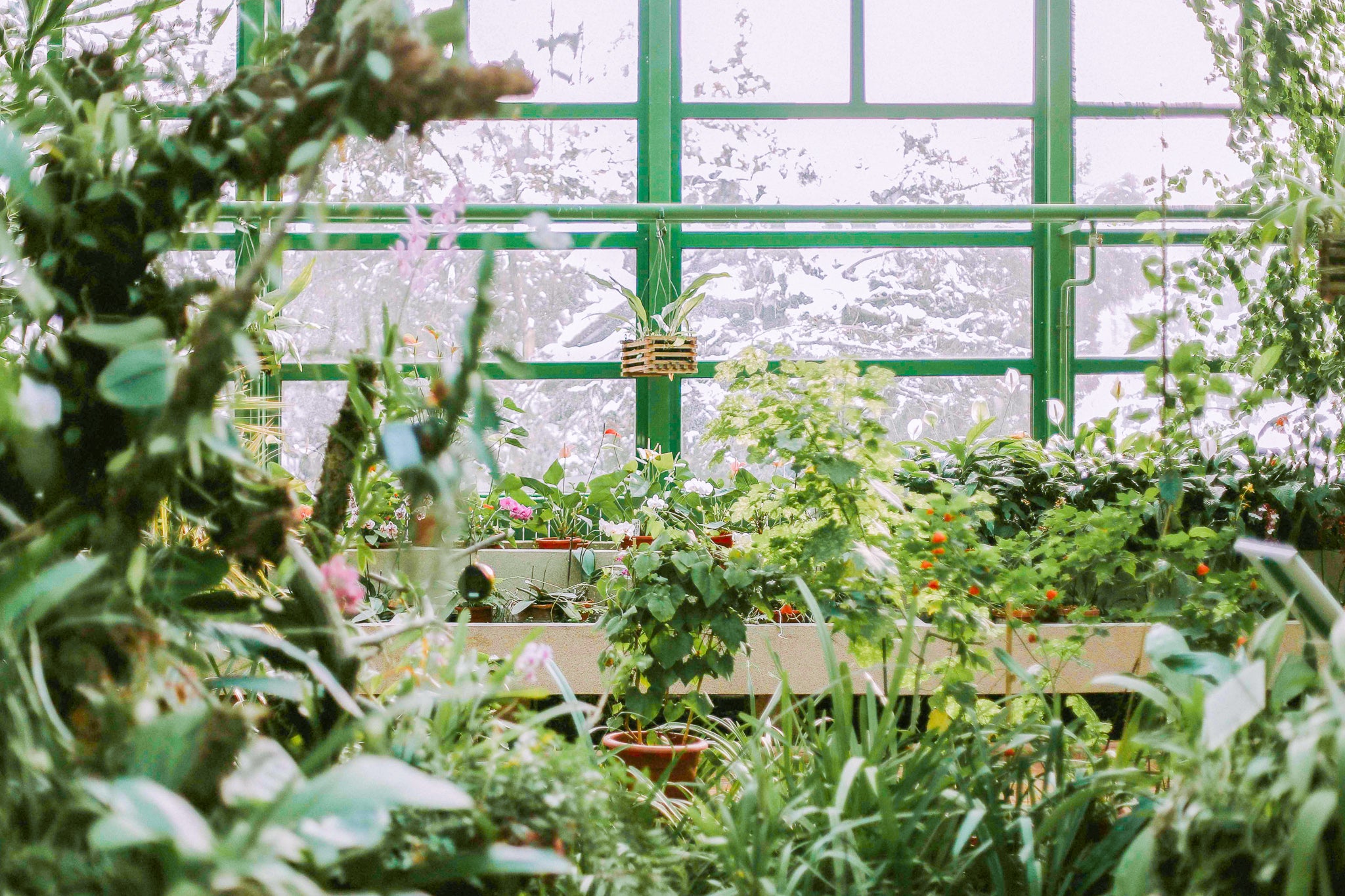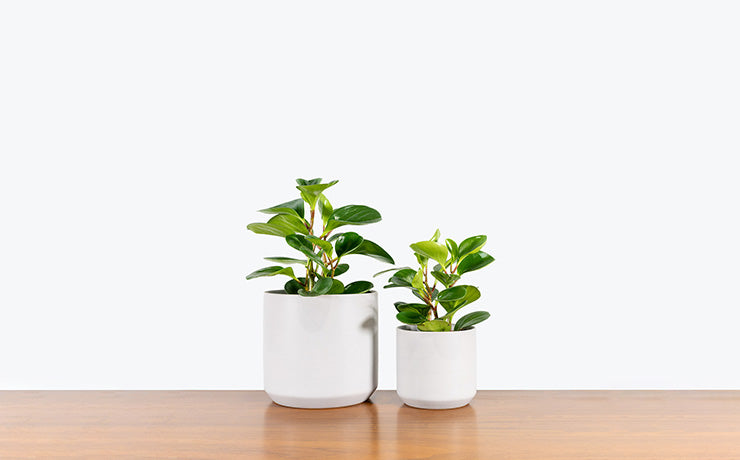
How to Care for Your Plants in the Winter
The summer months are amazing, you have all these new (and old) plant babies that you’ve been loving and caring for all season, and they’ve been loving you back, but the days are rapidly growing shorter and darker. Now what? The goal is to not only get your plants through the winter but to also keep them relatively happy and stable.
Canadian homes are not an ideal environment for plants, as the days are short and the dryness increases when our heating systems are active. This leaves what might have been an ideal climate for your plant in the summer, a dry, dark, and often colder version of what it was. Considering the majority of houseplants are tropical, you can guess how much they will love that. Below are some tips and tricks as to how you can make your home a comfortable place for your little ones, and I’m not talking about your human kids here…

Light Requirements
Problem number one: Light! By now you know, light is essential for a plant to thrive, as they need light energy to photosynthesize, or in very, very simple terms, produce new growth. While there is a lot of light in the summer, due to longer days as well as many sunny days, with the winter comes the darkness. I know that sounds dreary and dismal but it’s true. The days are shorter and many of them are cloudy, the bright, warm, sunny days are few and far between.
Due to this lack of light, plants often enter a dormant stage, meaning the new growth slows rapidly and they stay rather unchanged throughout the season. That is, as long as you are caring for them in the right ways. Your care routine should of course be adjusted based on how needy or particular your plant is. The more attention a plant has needed, based on your experience, the more you will need to do to make its winter home a comfortable one.
Some go to changes you could make at this point of the year, in regards to light:
- If your plant is a bright light plant, bring it closer to the source of light it is near so as to ensure it is getting the most light it can get during these darker days
- Invest in a grow light if that is something you have the means for, and if it seems to be the only thing that will make your plant happy
- Dust or wipe of the leaves of your plant so as to maximize the light it receives, getting rid of any potential pests, dirt or debris that could be getting in the way
Although it is safe to say that most plants go dormant in the winter, some continue to stay active in their growth. In this case, just make sure to follow the steps you have always followed that keep your plant happy and thriving. I’m sure there will be the odd yellowing or browning leaf, but that comes with the territory, as long as it is not a pest or watering problem, just be aware of how much light your pant is getting, and try to give it the most that you can. We are all doing our best out here!
Watering Requirements
Problem number 2: Watering. Many people get hung up on a “watering schedule” where it is thought that plants should be watered every 7 days, or every 10 days etc. But watering your plants should be very fluid and often changing, it all depends on the environment that they are in. As we all know now, it depends on how much light a plant is getting, how dry the space around them is, or how succulent their leaves are! You must water your plants as THEY see fit.
Since we are talking about winter care, it is very important that you realize the impact light has on your watering schedule. It is almost as if the second the days start getting shorter, the soil your plants live in dries out much slower. This is what you must keep an eye on before watering again. If your plant is often kept on the more moist side in the spring/summer, where you water once the top inch or so is dry, defer to keeping it even drier than that in the winter. If your plant is succulent in nature, where you water it very minimally even in the summer, water it even less now!
Your plants will often tell you when they need water, the leaves become softer, shrivelled, limper, or even slightly curled, so follow the signs. When it comes to most plants, it is better to err on the side of less water rather than too much, because overwatering can lead to leaf loss and root rot. There is much less daylight for photosynthesis so your plants are not very active, hence, they won’t need a lot of moisture near their roots.
Humidity Requirements
Finally, we come to problem number three: Humidity! If there is one thing Canadian winters do, it’s that they suck all of the moisture out of the air with our heating systems. This means that if you have houseplants, you should try to up the humidity in the surrounding environment as much as you can. There are many houseplants that would still do just fine, with maybe the minor browning of edges or yellowing of leaves, but we want to make our homes as inviting and welcoming to our plants as we can, right?
Here are some possible solutions:
- Place a plant, in its nursery pot, on top of a bed of rocks that are covered in water, this will increase the humidity in the air directly surrounding the plant
- Place a glass of water next to the plant, that also does something similar
- Mist your plants weekly in the winter
- If you have the means to, invest in a humidifier, depending on the one you get, this should increase the humidity of the room in which you keep your plants!
Misting plants and spraying them down with insecticidal soap every once in a while is also a useful tool for pest prevention before you even have them.
Since there will be plenty of heat blowing out of the vents while our homes are warming up, make sure to not leave your plants near these vents where it will be drafty and exceptionally dry. Likewise, don’t keep your plants too close to any windows, as the cold will also affect your plants and may cause the leaves to burn if they receive too much cold temperature exposure.
Fertilizing Requirements
For most plants, it is safe to say that they will enter a dormant period, so there is no need to fertilize your plants until they begin to grow again next spring. However, some plants continue to grow throughout the winter, they will do whatever they want, as we all know! If this is the case, fertilize your plant with any signs of new growth, even if that ends up happening in January, or February. Follow whatever the directions say on the fertilizer you use, as to how often you should fertilize and how much food the plant should be given.
Even if your plant is growing, hold off on any repotting until the days have grown longer and warmer, as this will give your plant a better shot at acclimating to its new home. More energy is required during this adjustment period so we don’t want to start the plant off on the wrong foot.
I know it may sound as if you need to be placing your plants in a therapeutic spa all winter long, but they really do not require that much. As long as you make some of these adjustments, your plants should remain happy! Always watch your plant to see how it reacts to its environment, it will tell you if you are doing something wrong, or that you are doing everything right. Besides, if you already own relatively non-fussy plants, then don’t worry too much when the odd leaf dies off or brown edging occurs, it is completely natural. Even out in their natural habitat, no plant looks perfect. Always remember that, and good luck with your winter care!






